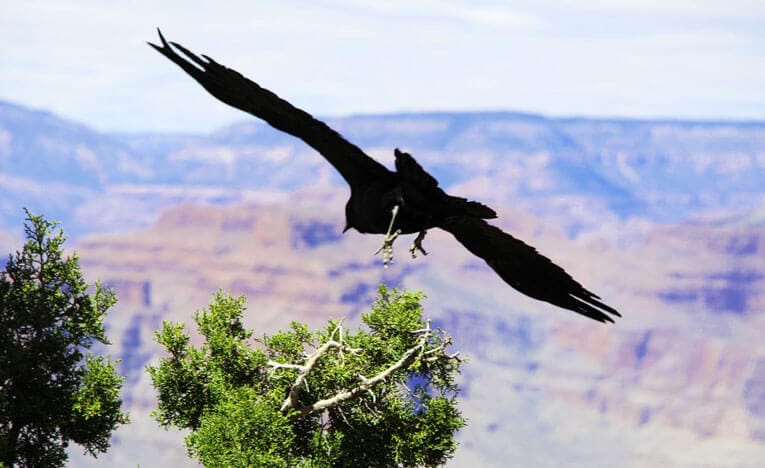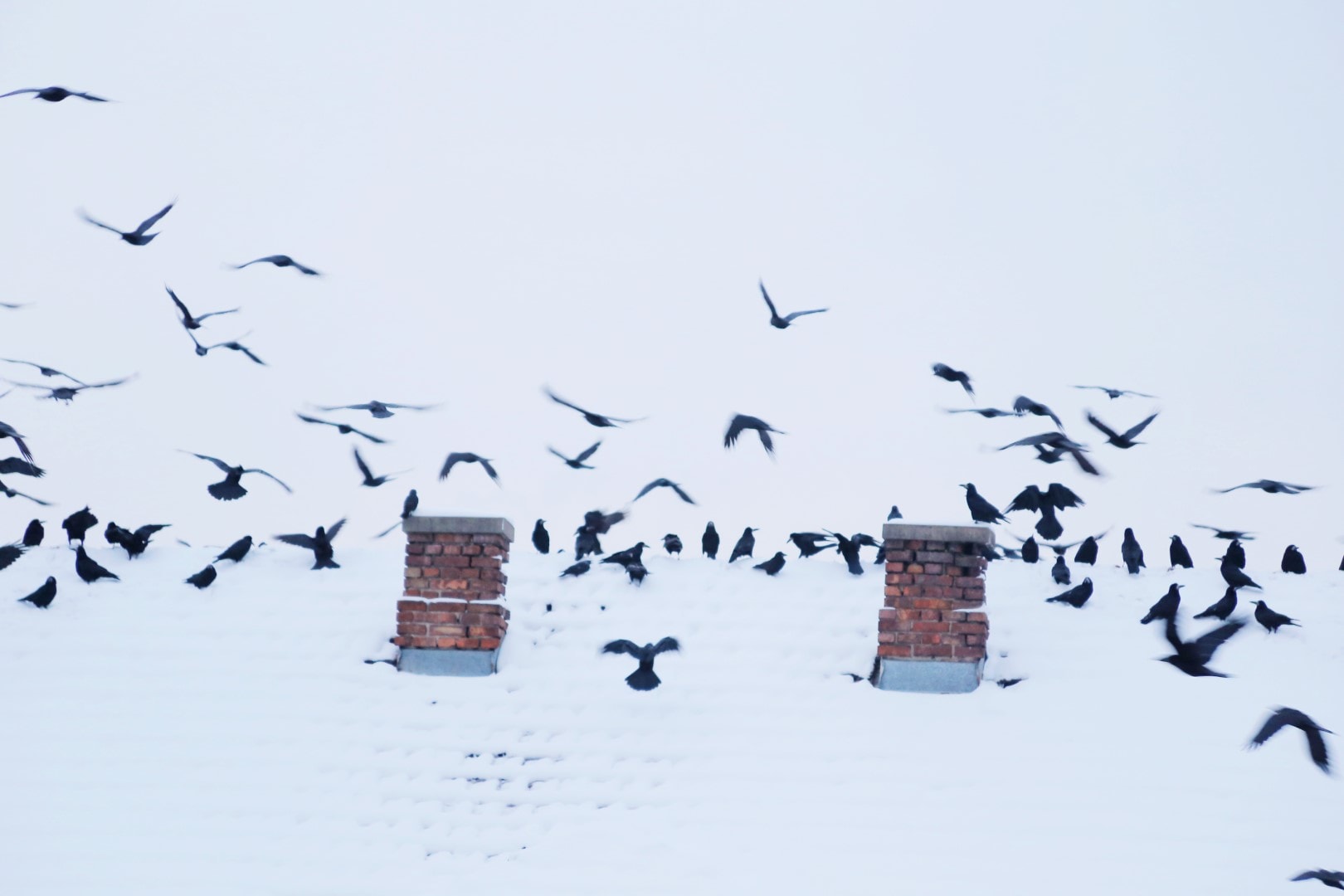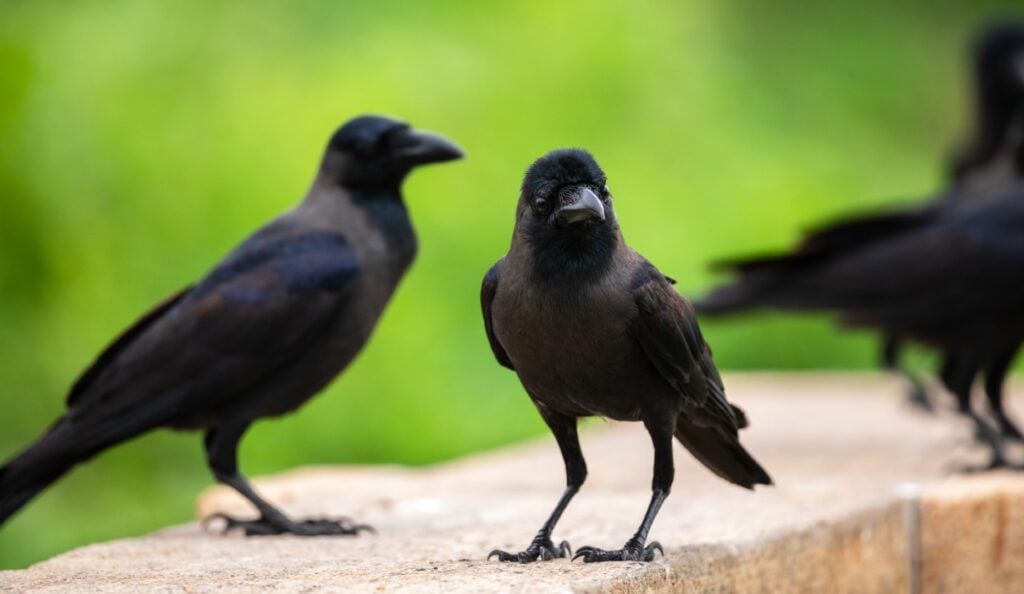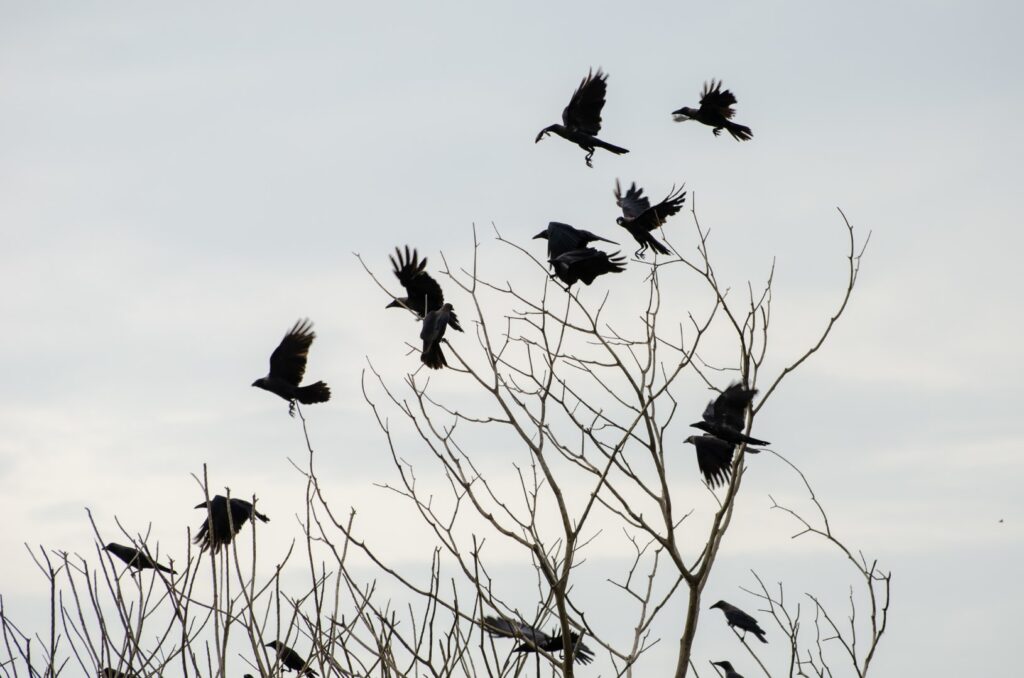Discover the Crow
Crows are among the most intelligent and adaptable birds in the world. Recognizable for their black plumage, cawing calls, and remarkable problem-solving abilities, crows have fascinated humans for centuries. This page explores the fascinating world of crows, shedding light on their behaviors, habitats, and the role they play in various ecosystems.
Identification of the Crow
Physical Description
Crows are medium to large-sized birds, typically weighing between 315 to 620 grams with a wingspan of about 85 to 100 centimeters. They are known for their all-black feathers, sharp beaks, and sturdy legs.
Differences Between the Sexes
Male and female crows are very similar in appearance, making it challenging to distinguish between them based on physical characteristics alone.
Plumage and Seasonal Changes
Crows maintain their black plumage throughout the year, with little to no variation between seasons.
Habitat and Distribution
Crows are highly adaptable and can be found in a wide range of geographical areas, from rural farmlands to dense urban cities. They prefer habitats that offer ample food supply and nesting opportunities, such as forests, agricultural areas, and suburban neighborhoods.


Behavior and Lifestyle
Feeding
Crows have a diverse diet that includes insects, seeds, fruits, small animals, and even garbage, showcasing their adaptability in various environments.
Social Behavior
Crows are known for their complex social structures, often forming large flocks that work together to find food and protect against predators.
Migration
While some crow species migrate, many are resident birds that stay within the same area year-round, depending on the local climate and food availability.
Reproduction
Crows typically breed in the spring, building nests in trees where they lay a clutch of 3 to 9 eggs. Both parents participate in nurturing and protecting the chicks.
Conservation and Status
Most crow species are not currently considered endangered, thanks to their adaptability. However, habitat destruction and pollution pose threats to their populations.


FAQ on the Crow
Are crows really that intelligent?
Yes, crows are among the most intelligent bird species. Studies have shown that they can solve complex problems, use tools, and even recognize human faces.
Can crows mimic sounds?
Some species, particularly the Common Raven, a close relative of the crow, are known for their ability to mimic sounds, including human voices. While crows can learn to understand and react to specific sounds, their mimicking ability is not as pronounced as in some parrots or ravens.
How do crows communicate with each other?
Crows communicate through a variety of sounds, including caws, clicks, and rattles. They have a complex language that can convey information about threats, food sources, and social cues. Researchers believe their communication is much more sophisticated than previously understood.
Do crows hold funerals for their dead?
Crows are known to gather around their dead. This behavior is thought to be a way for crows to understand potential threats in their area and communicate danger to other crows, rather than mourning in the human sense.
Are crows solitary or social creatures?
Crows are highly social creatures. They form large families and communities, known as murders, where they cooperate for feeding, protection, and nurturing of their young. Some crows will stay with their family units for years.
Can crows recognize individual humans?
Yes, crows can recognize and remember individual human faces. Studies have shown that they can distinguish between friendly or threatening humans and will communicate this information to other crows.
What is the lifespan of a crow?
In the wild, crows can live an average of 7 to 8 years, but some individuals have been known to live up to 20 years. In captivity, their lifespan can extend further due to the absence of predators and access to consistent food sources.
How can I attract crows to my backyard?
Providing food is a surefire way to attract crows. They are opportunistic feeders and enjoy a variety of foods, including unsalted peanuts, corn, and other grains. Ensure that the feeding place is safe from predators and provides a clear line of sight for the crows.
Are crows beneficial to the environment?
Yes, crows play a significant role in their ecosystems. They help control pest populations, clean up carrion, and their seed consumption contributes to plant dispersion. Their intelligence also makes them key participants in the ecological community, affecting various forms of life in their environment.
How to Help Crows
Conserving natural habitats and reducing pollution can significantly help crow populations. Avoiding the use of pesticides and providing safe feeding grounds can also support their thriving in urban areas.
The Risks Associated With the Crow
The noise nuisance caused by crows—birds characterized by their raucous cawing—is exacerbated by the fact that the species flocks together in large groups. The damage caused by their droppings, which soil and deteriorate buildings, also carries its share of inconveniences. Considered scavengers and garbage collectors, individuals of this species sometimes attack waste left by the sides of buildings. Call on the specialists from Bird Solution to learn how to get rid of harmful birds, such as American crows. The products identified by our specialized team for keeping these birds away have all proven their effectiveness in the field and are guaranteed.

